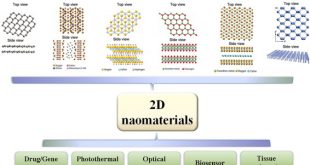Introduction: The Earth’s temperature has been on a steady rise, with 2021 marking the sixth-warmest year on record. The consequences of this warming trend are evident in regional and seasonal extremes, reduced snow cover and sea ice, intensified rainfall, and shifts in habitat ranges. One significant contributor to the escalating …
Read More »The Evolution of Space Manufacturing: On-Orbit Assembly and Robotic Technologies
Introduction: In the annals of space exploration, satellites and spacecraft have traditionally been conceived on Earth, meticulously constructed, and then launched into orbit. However, this conventional approach poses inherent limitations on the size, volume, and design complexity of payloads due to constraints imposed by the fairing of launch vehicles. These …
Read More »3D Printing: Illuminating the Future of Photonics
Introduction: In the dynamic realm of photonics, where the manipulation of light drives technological innovation, a revolutionary force is emerging – 3D printing. This cutting-edge technology, already a catalyst in diverse industries, is set to reshape the landscape of photonics by transforming how we design, manufacture, and utilize photonic devices. …
Read More »Pioneering the Future: Harnessing the Power of 2D Nanomaterials for Revolutionary Technologies
Introduction: In the ever-evolving landscape of technological innovation, 2D nanomaterials have emerged as a game-changing class of materials with extraordinary properties, paving the way for advancements across diverse fields. From revolutionizing high-speed electronics to enhancing military surveillance, energy storage devices, and even armors and weapon systems, these ultrathin wonders are …
Read More »Unlocking the Cold Frontier: The Marvels of Cryogenic Refrigeration Technology and Its Diverse Applications”
Introduction: In the quest for scientific and technological advancements, researchers have delved into the subzero realms of cryogenic temperatures, unveiling a fascinating world of possibilities. At the heart of this exploration lies cryogenic refrigeration technology, with cryocoolers leading the charge as essential devices capable of reaching and maintaining extremely low …
Read More »SOSA Standard: Revolutionizing Defense Electronics and Electronic Warfare Design
Introduction: The battlefield of the future is digital, interconnected, and increasingly complex. To maintain dominance in this rapidly evolving landscape, the U.S. military needs cutting-edge technology that is modular, adaptable, and capable of operating seamlessly in a congested electromagnetic spectrum. Enter the SOSA (Sensor Open Systems Architecture) Standard, a revolutionary …
Read More »Paving the Way for a Lunar Economy: DARPA’s LOGIC Initiative Accelerates Commercial Lunar Infrastructure Standards
Introduction: As the world turns its gaze toward lunar exploration, the Defense Advanced Research Projects Agency (DARPA) is taking bold strides to ensure the development of a robust lunar economy. The Lunar Guidelines for Infrastructure Consortium (LOGIC) emerges as a pivotal initiative, aiming to establish interoperability standards for commercial lunar …
Read More »Revolutionizing the Battlefield: 3D Printing’s On-Demand Arsenal for the Modern Military
Introduction: In the ever-evolving landscape of modern warfare, technology is a key driver of innovation. Among the groundbreaking advancements, 3D printing has emerged as a game-changer, providing the military with unprecedented capabilities. 3D printing or additive manufacturing is ongoing revolution in manufacturing with its potential to fabricate any complex object …
Read More »Unveiling the Future: Holograhy moving to Real-Time 3D Holograms on Your Smartphone
Introduction: The marvel of 3D hologram technology has evolved from static, monochromatic images to dynamic, real-time displays that are now making their way onto smartphones. Our eyes, the sophisticated light detectors that capture the essence of the world around us, are now able to perceive and interact with three-dimensional holograms …
Read More »New Breakthrough in Energy Storage – MIT Engineers Create Supercapacitor out of Ancient Materials
In a groundbreaking stride towards sustainable energy solutions, a team of MIT engineers has harnessed the power of ancient materials to create a revolutionary supercapacitor. MIT engineers have developed a groundbreaking supercapacitor using a combination of ancient and abundant materials – cement, water, and carbon black. This innovative device holds …
Read More » International Defense Security & Technology Your trusted Source for News, Research and Analysis
International Defense Security & Technology Your trusted Source for News, Research and Analysis




